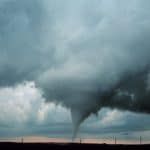Regime change for nuclear security
By Fissile Materials Working Group | September 7, 2011
Almost no country in the world would refuse an invitation to join a collective declaration acknowledging nuclear terrorism as one of the most challenging threats to global security. However, defining a common view about how to advance practical measures that will prevent nuclear terrorism is not so easy. When it comes to nuclear security, it has always been difficult to go from statements to actions.
The term “nuclear security” covers a vast swath of issues, including the prevention of, detection of, and response to criminal acts involving nuclear materials, radioactive materials, and facilities associated with nuclear and radioactive materials. Unsurprisingly, an intricate constellation of international instruments — mostly voluntary and nonbinding — is used to reduce the risks of nuclear terrorism and to reduce the illicit trafficking of nuclear materials and technology. To name just a few:
- The Convention on the Physical Protection of Nuclear Materials, enforced since 1987.
- The 2005 International Convention for the Suppression of Acts of Nuclear Terrorism.
- The 2003 Code of Conduct on the Safety and Security of Radioactive Sources and its supplementary, Guidance on the Import and Export of Radioactive Sources of 2004.
- The 2004 UN Security Council Resolution 1540, which calls on states to take “adequate and effective” measures to prevent terrorism and proliferation.
- The 2001 UN Security Council Resolution 1373.
- The 2009 UN Security Council Resolution 1887, which assesses threats to global security derived from terrorism.
- The Proliferation Security Initiative of 2003, focused on the interdiction of suspicious materials related to weapons of mass destruction during transport.
- The 2002 G-8 Global Partnership, which uses fund-raising to support safety, disarmament, and nonproliferation projects.
- The 2006 Global Initiative to Combat Nuclear Terrorism, an information-exchange initiative.
The aggregation of such tools, together with individual nations’ own laws, comprise the current nuclear security regime — a regime of overlapping efforts and initiatives, overwhelming bureaucratic burdens, a host of voluntary and nonbinding “commitments,” challenges to efficiency, a lack of authority to deal with transgressions, and a lack of consensus on key issues (like sovereign rights versus multilateral control). So, given the enormity of the nuclear security complex, how internally coherent is the nuclear security regime? More important, can it cope with current and future challenges?
Simply put, no. The current nuclear security regime urgently needs to evolve into a high-functioning nuclear security architecture. While the current regime attempts to manage nuclear security threats with disparate tools and varied legislative efforts, the nuclear security architecture would be the result of a systemic strategic exercise to integrate all the current security measures while allowing for future needs. The new design would close gaps, weed out weaknesses, and prioritize efficiency.
Such a transition will not be easy: It requires strong political will, consensus, and a solid technical foundation. The first step will be the most difficult: convincing the global community — every nation — of the stark reality that the immense dangers posed by nuclear threats affect the entire planet (a concept not accepted everywhere). Only then can the benefits of the nuclear security architecture be fully realized — benefits that, unlike the current regime, would be shared by all countries and not just a few.
The required points of global consensus for the new nuclear security architecture can be reduced to a few basic concepts. Some of them break long-held practices and push toward a new world order for nuclear security:
- A long-range strategic vision and clear purpose for nuclear security must be defined.
- All countries must be included in order to reach an essential, universal understanding of nuclear security.
- The design — based on equal duties and equal benefits — needs to be comprehensive, covering all expressions of the nuclear security risk: nuclear materials, radiological materials, and their related facilities.
- Current tools are to be transformed into a new set of simpler instruments that focus on implementation over mere reporting.
- The model has to be dynamic and flexible enough to match the evolution of future threats.
- The architecture will maximize active participation of all countries with incentives and opportunities.
- Available funding must be used to re-orient countries with social, economic, and technological deficits.
An upgraded design also needs to be implemented gradually in order to preserve the best of the current nuclear security regime while incorporating new elements to close gaps and redundancies. In particular, the nuclear security architecture should focus its efforts on:
- Reduction of current fissile stockpiles by increasing downblending and suspending uranium enrichment and plutonium separation.
- Implementation of universal standards to protect radiological sources and facilities.
- Definition and sharing of best practices.
- Diversification of managerial and commercial roles among countries.
- Reassessment of the role of multilateral organizations.
- A study of potential regional solutions to deal with tactical aspects of implementation.
- Active participation of think tanks and other social actors to reinforce governmental activity.
For a time, the world of nuclear security looked to be on course for such a dramatic overhaul. The April 2010 Nuclear Security Summit in Washington, DC, hosted by President Barack Obama, was critical to putting nuclear security high on the international agenda. The conference, which brought together top leaders from 47 states and three multilateral organizations, aimed to enhance international cooperation to prevent nuclear terrorism and to focus on securing nuclear materials and curbing illicit trafficking.
The outcomes from the summit — a communiqué and a work plan — presented an agreed upon view about what to do and how to do it. The goal of securing all vulnerable materials in four years was stated as a kind of leitmotif from the very beginning — though many consider that an impossible goal to achieve. Other commitments included converting civilian reactors from HEU to LEU and enforcing the amendment to the Convention of Physical Protection of Nuclear Materials, which strengthens its provisions. Meanwhile, the work plan focused on improving and universalizing existing measures. The palpable goodwill throughout the summit even led to international joint statements and commitments to reducing existing vulnerabilities and to helping others to do so through funding, assistance, and information-sharing.
In short, the summit was an innovative and successful venture that made a big impact in 2010. Unfortunately, the fulfillment of many of these promises has been lower than originally foreseen, and differences have surged in follow-up meetings, including the usual antinomy between the Western world and the non-aligned countries. Now, the possibility of erasing the decisive impacts of this valuable effort is all too real. It is time to break the destructive logic that has brought so much frustration to the global community. It is time for a comprehensive nuclear security architecture.
Traditional roles and postures of suspicion must yield to confidence and trust if the global community is to truly address nuclear security in a meaningful way. Non-aligned and independent actors must consider that they are not immune to the impacts of a devastating nuclear attack — no matter where it strikes — and must stop rashly opposing any advance or initiative proposed. Meanwhile, Western countries — and especially the United States — need to exert a more subtle leadership by showing a willingness to offer more opportunities to more countries. Slight changes in attitude could be a powerful driver of success in the reduction of global nuclear security threats.
The 2012 Nuclear Security Summit in Seoul, Korea, is an opportunity to at last put these ideas to work. The conference should even take a more inclusive approach and invite the entire spectrum of actors with nuclear materials and facilities — even those who did not attend the 2010 event. With forethought to the agenda now, the summit could become a true strategic incubator for a more rational nuclear security architecture. An international and multidisciplinary group of experts, diplomatic interactions, out-of-the box thinking, and innovative proposals that focus on synergy, integration, and efficiency could go a long way toward achieving real progress on nuclear safety and nonproliferation.
Editor’s Note: This column was written by Irma Arguello, founder and chair of the Nonproliferation for Global Security Foundation (NPSGlobal), a private, nonprofit initiative. Arguello is an international partner of the Fissile Materials Working Group.
Together, we make the world safer.
The Bulletin elevates expert voices above the noise. But as an independent nonprofit organization, our operations depend on the support of readers like you. Help us continue to deliver quality journalism that holds leaders accountable. Your support of our work at any level is important. In return, we promise our coverage will be understandable, influential, vigilant, solution-oriented, and fair-minded. Together we can make a difference.
Topics: Columnists















